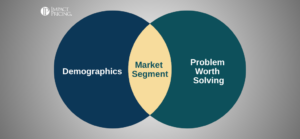I’ve written about this several times during my career, and here’s the periodic rant.
Your boss was in school and learned about price elasticity.
What is Price Elasticity?
The definition of price elasticity is the percentage of volume change for a 1% change in price. If you lower your price by 1% and get a 2% bump in volume, then you have a price elasticity of 2. (+2%/-1%=-2, but the negative is typically ignored). The theory is if you have high price elasticity, you should lower prices. If you have very low elasticity, you should raise prices.
Following Price Elasticity Pricing Theory Could Actually Be Harmful to Your Company
First, I can agree with the last sentence above. If you calculate an elasticity and find it is below 1, then raise prices. I tend to be a fan of raising prices and this is a great indicator you should do so.
However, if you have high price elasticity, be very very careful before lowering prices. There are two very big reasons.
1. Price elasticity does not consider competition.
As a thought experiment, one week you lower your price just as a test. A lot of people that used to buy from your competitor switch and buy from you. That’s a big jump in volume which could give you a high price elasticity. You think, “Wow, that worked great!” So you made your price decrease permanent. What do you think your competitor will do?
Your price elasticity may have measured a short duration without competitive reactions. If competitors react by lowering their prices to keep their share, then all you’ve done is hurt industry profits. Price elasticity is a concept created for economists to say if the price of milk, ON AVERAGE, changes, what will happen to the volume. It’s for industries, not for companies. If you have a complete monopoly, then you can use price elasticity because you are the industry. If you have competition, you must be very careful.
2. Price elasticity does not consider variable costs.
Let’s do a little math. You sell 1,000 units of a product for $100 with variable costs of $90. That means you made $10*1,000 = $10,000 in profit. You run your price elasticity study and find a very high elasticity of 5, so you lower your price by 1% to gain 5% bump in volume.
Now you sell 1,050 units at $99 with variable costs still at $90. Now your profit is $9*1,050 = $9,450. You just gave away $550 in profit. Of course this is an exaggerated example, but it makes the point. Increasing volume is not the same as increasing profit.
I periodically rant about price elasticity for pricers because I so often see it used incorrectly. This happens because we sometimes just follow the numbers and don’t really think about what drives them.
My advice is: Don’t use any metric if you don’t understand its underlying drivers, especially price elasticity.















